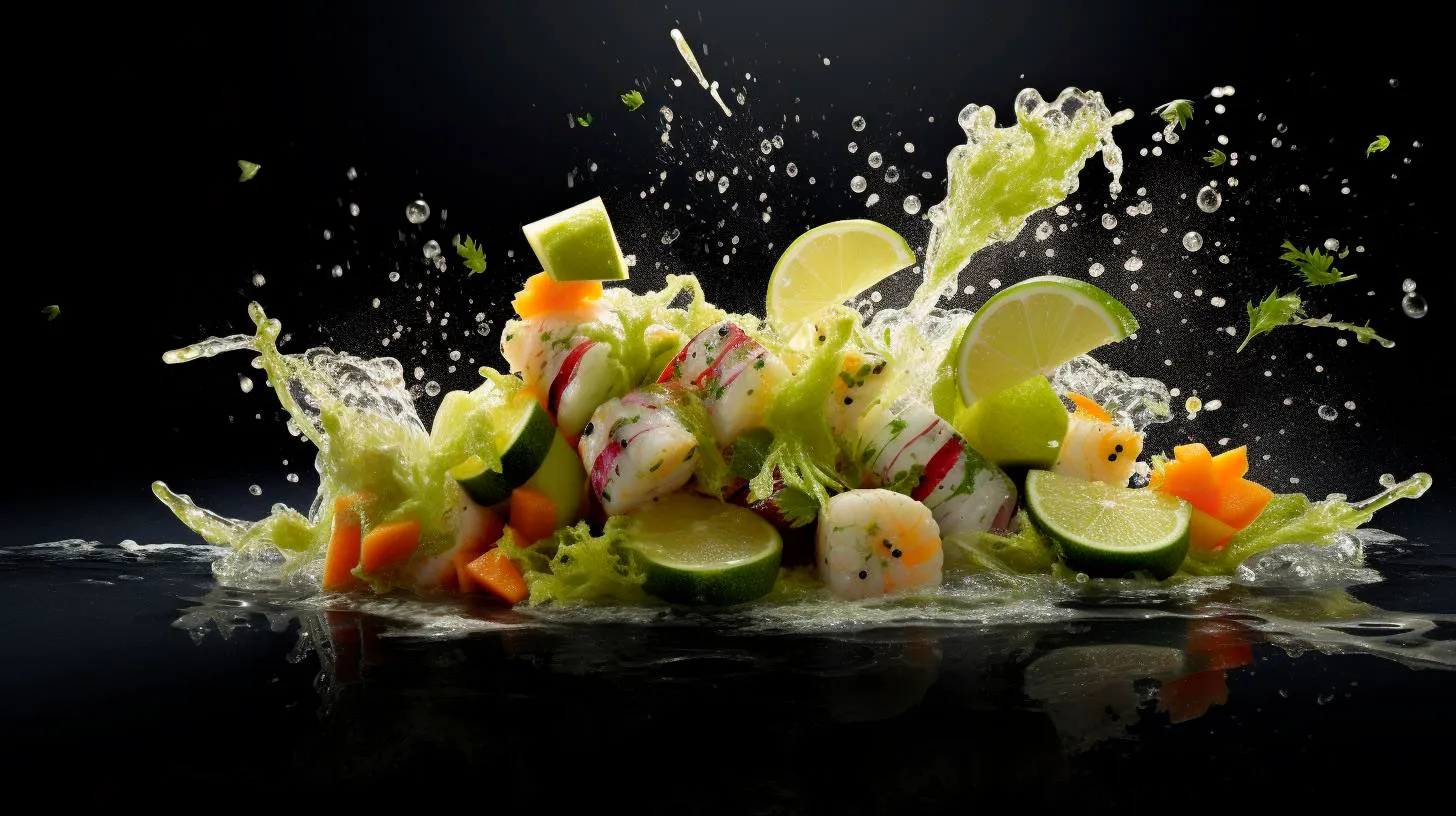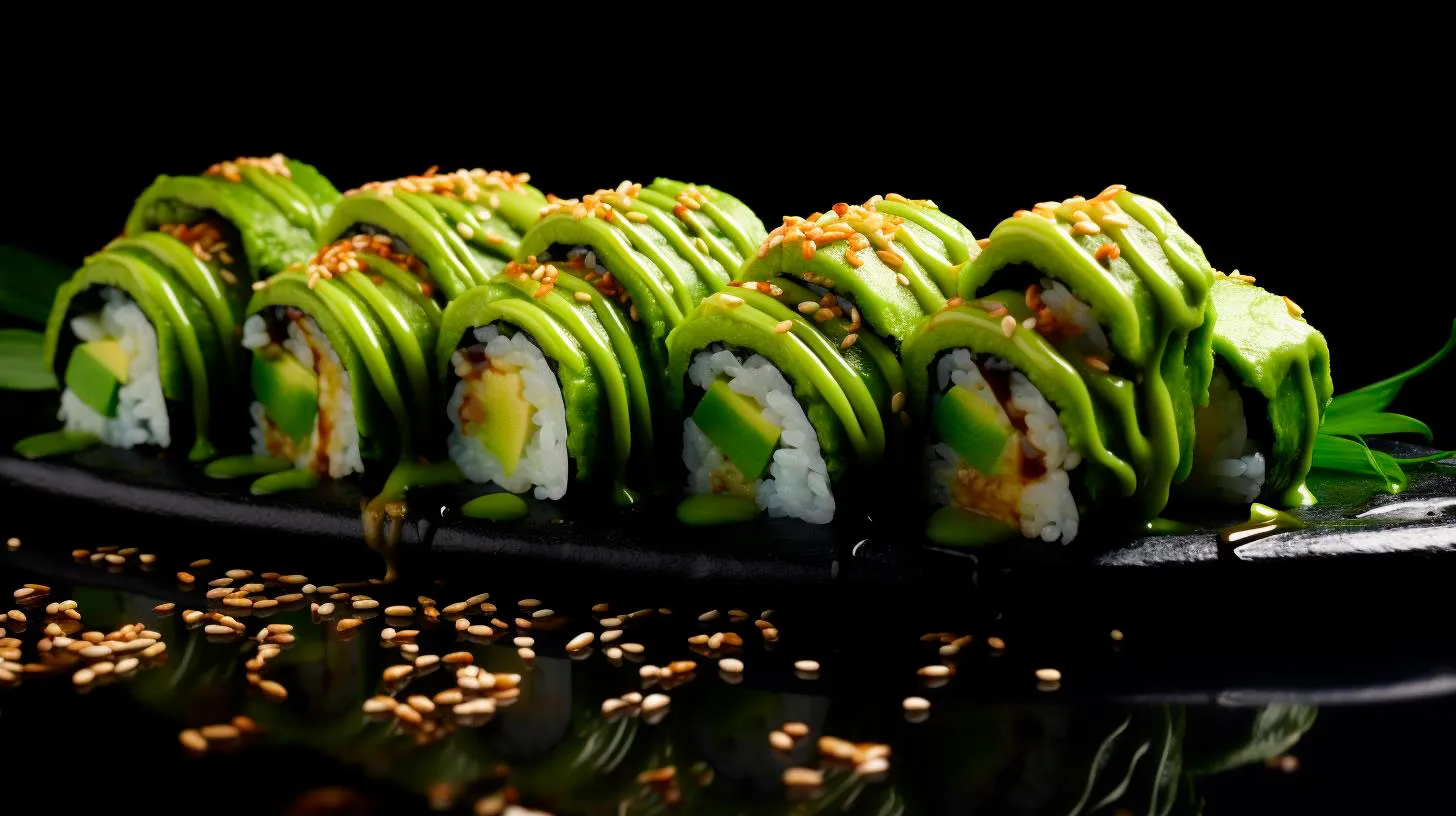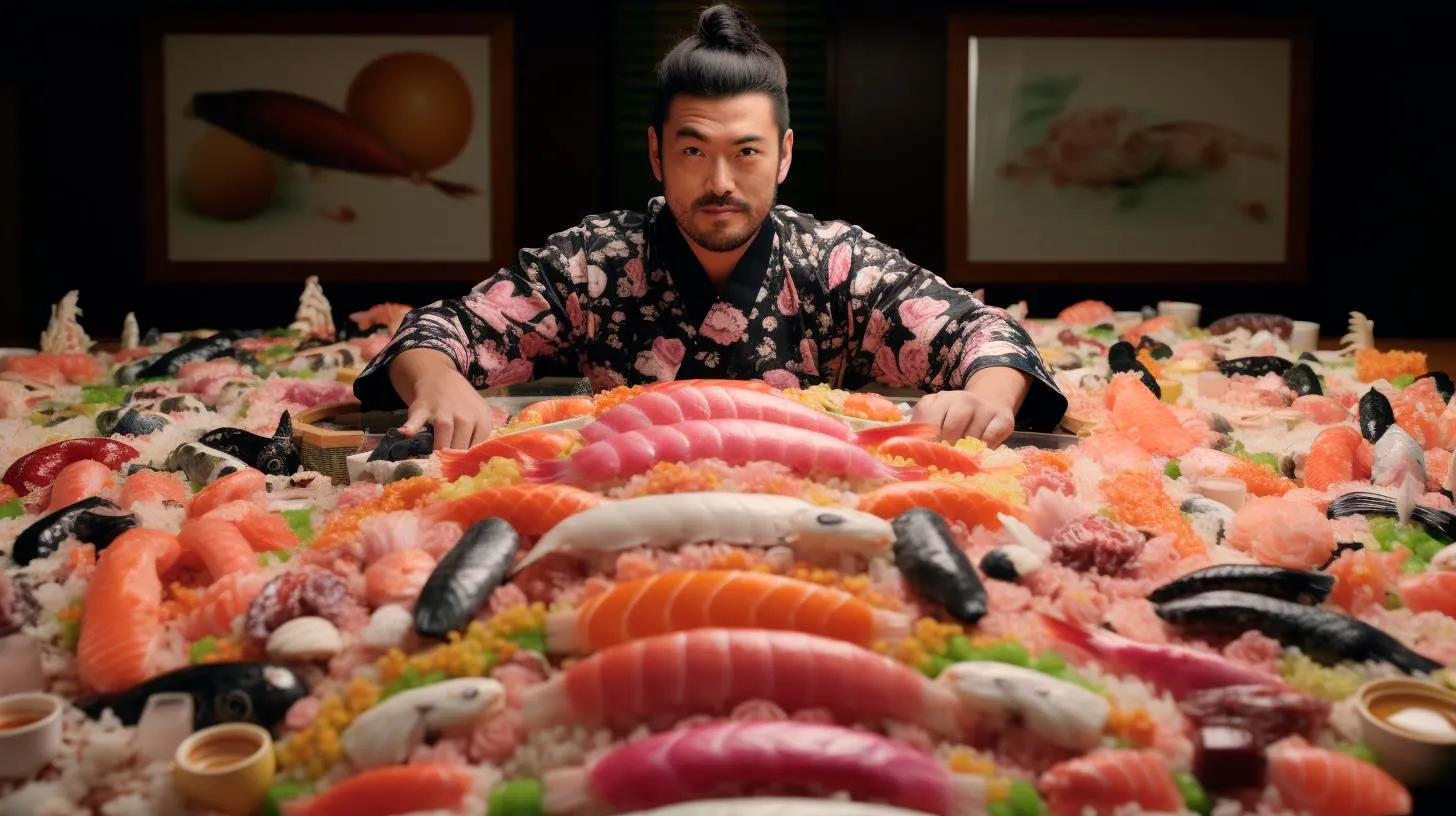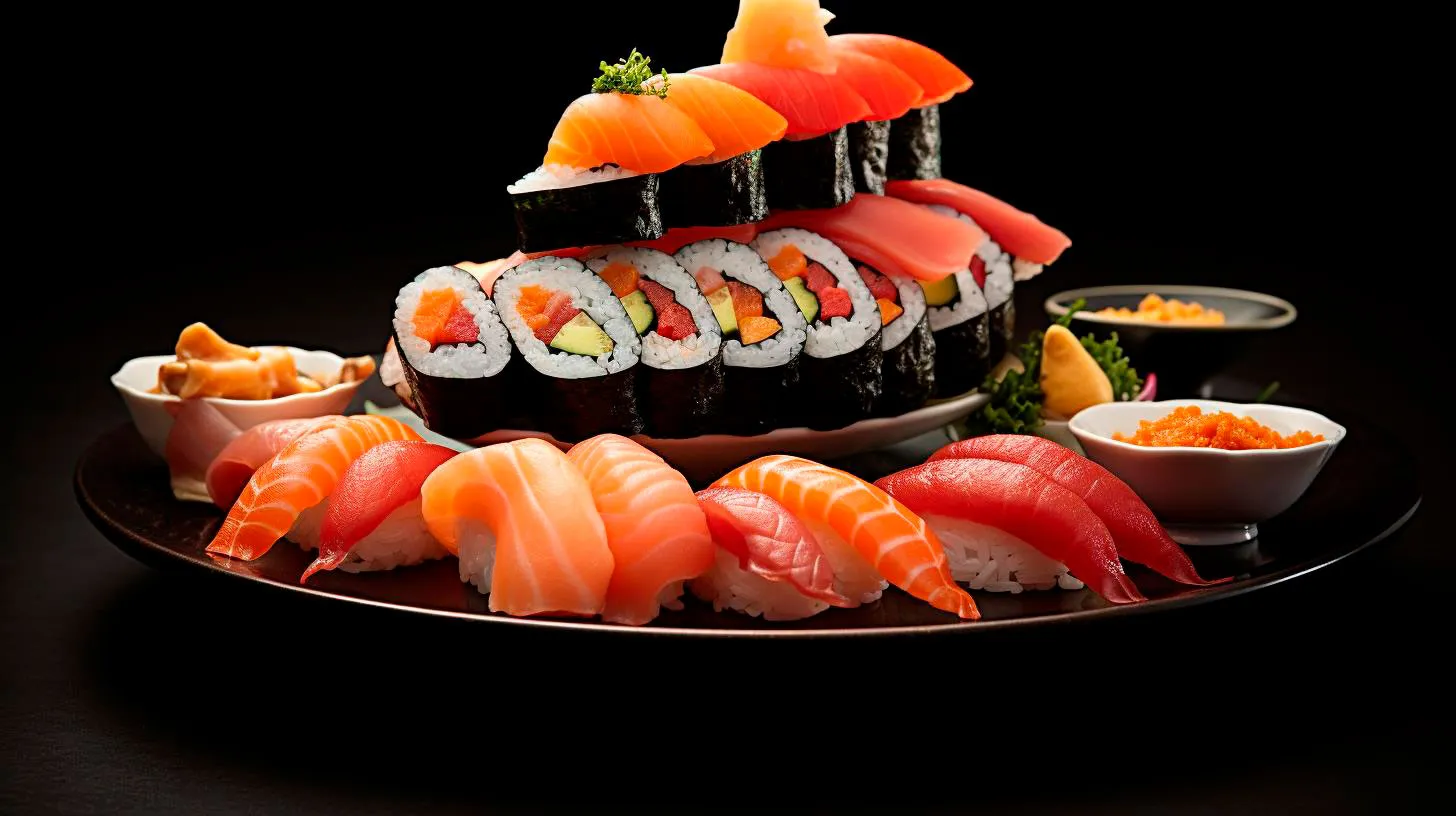Elevate Your Sushi Experience: The Art of Pairing Tobiko and Masago
In particular, Tobiko and Masago are two types of fish roe that can transform your sushi from ordinary to extraordinary. In this article, we will delve into the art of pairing Tobiko and Masago to create a mouthwatering symphony of flavors like no other.
Tobiko: The Delicate Burst of Flavor
Tobiko, also known as flying fish roe, is a popular choice among sushi aficionados due to its vibrant colors and distinctive texture. Each egg is small, crunchy, and bursts with a unique umami flavor that complements various sushi creations. Here are some key points to consider when pairing Tobiko:
- Color and appearance: Tobiko comes in a variety of colors, including orange, red, black, and green. The color of Tobiko can be visually appealing and can add an element of excitement to your sushi dish.
- Flavor: Tobiko has a naturally salty and briny taste, which makes it an excellent addition to sushi rolls or nigiri. Its delicate flavor harmonizes well with the umami-rich taste of fresh fish.
- Texture: Tobiko has a unique texture, characterized by its crispness and the slight pop of each egg. Its crunchy texture adds a delightful mouthfeel that contrasts with the softness of the sushi rice and the smoothness of the fish.
When it comes to pairing Tobiko, it is essential to consider the flavor profile of the other ingredients in your sushi creation. For instance:
- Pairing Tobiko with fatty fish, such as salmon or tuna, can create a balance of flavors by cutting through the richness of the fish.
- Combining Tobiko with creamy ingredients like avocado or cream cheese can provide a delightful contrast in textures.
- Using Tobiko as a topping for sushi rolls or chirashi bowls can enhance the visual appeal of the dish while adding an extra layer of flavor.
Masago: A Subtle Touch of Brininess
Like Tobiko, Masago is another type of fish roe that is commonly used in sushi and other Japanese dishes. Although it shares some similarities with Tobiko, Masago has its unique characteristics that make it worth exploring. Here are some key takeaways when it comes to Masago:
- Color: Masago is typically bright orange in color, which adds vibrancy and visual appeal to any sushi dish.
- Flavor: Masago offers a milder taste compared to Tobiko. Its flavor profile is subtly briny, making it an excellent choice for those who prefer a more delicate caviar.
- Texture: Masago has a smaller, smoother texture compared to Tobiko. The fine grains melt in your mouth, providing a pleasant sensation.
When pairing Masago, it is essential to consider the overall flavor profile of your sushi creation. Here are a few suggestions:
- Using Masago as a topping for sushi rolls, particularly those with a creamy or mild filling, can provide a burst of flavor and add an attractive pop of color.
- Incorporating Masago into sushi bowls or salads can add a pleasant texture and subtly enhance the overall taste.
The Perfect Pairing: Tobiko and Masago Together
While both Tobiko and Masago have their own unique characteristics, combining them can take your sushi experience to another level. The contrasting colors, flavors, and textures of Tobiko and Masago create a harmonious symphony in your mouth. Here are some key points to consider when pairing these two caviars:
- Visual appeal: The combination of colorful Tobiko and vibrant Masago can make your sushi creation visually captivating.
- Flavor explosion: The salty and slightly briny taste of Tobiko blends perfectly with the subtle nuances of Masago. Together, they create a burst of umami flavor that complements the freshness of the fish.
- Textural delight: The crispness of Tobiko and the smoothness of Masago create an intriguing blend of textures that adds depth and complexity to each bite.
When it comes to incorporating Tobiko and Masago together, the possibilities are endless. You can experiment with different combinations, such as using both caviars as toppings, incorporating them into sushi rolls, or even creating a unique caviar-based sauce.
In conclusion, Tobiko and Masago are exquisite delicacies that can elevate your sushi experience to new heights. Their vibrant colors, distinctive flavors, and unique textures make them an essential element in the art of sushi pairing. By selecting the right combinations and paying attention to each ingredient’s characteristics, you can create a symphony of flavors that will leave your taste buds craving for more. So, the next time you indulge in sushi, don’t forget to explore the magic of Tobiko and Masago.
From Texture to Taste: Unlocking the Secrets of Tobiko and Masago in Sushi Rolls
In this article, we will dive deep into the secrets of tobiko and masago, exploring their distinct characteristics, culinary uses, and the reasons why they are essential ingredients in sushi.
Tobiko: The Flavorful Fish Roe
Tobiko refers to the roe of the flying fish, a popular ingredient in Japanese cuisine. These small, shiny, orange pearls are packed with umami flavor, adding a delightful pop to any sushi roll. Its unique taste profile sets it apart from other types of roe.
Here are some key features and advantages of tobiko:
- Crunchy Texture: Tobiko has a delicate, crunchy texture that provides an exciting contrast to the softness of the sushi roll.
- Bright Colors: While orange is the most common color, tobiko can also be found in vibrant hues such as yellow, red, and black. These eye-catching colors add visual appeal to sushi presentations.
- Nutritional Benefits: Tobiko is a great source of protein, Omega-3 fatty acids, and essential minerals, making it a healthy addition to your sushi roll.
- Versatility: Aside from being a popular sushi topping, tobiko can also be used as a garnish for various dishes, such as salads and sashimi platters.
Fun fact: Did you know that tobiko is also dyed using natural ingredients? For example, yellow tobiko gets its vibrant color from the yolk of century eggs, while black tobiko is infused with squid ink!
Masago: The Tiny Delicacy
Another type of fish roe widely used in sushi is masago. Masago refers to the roe of the capelin fish and is comparable in size to tobiko, but with some subtle differences.
Here are the features and advantages of masago:
- Milder Flavor: Compared to tobiko, masago has a milder flavor profile. It provides a subtle taste without overpowering the other ingredients in your sushi roll.
- Small and Delicate: Masago’s petite beads are perfect for adding a gentle crunch to your sushi. Its delicate texture enhances the overall eating experience.
- Natural Colors: While masago is commonly recognized for its bright orange color, it can also be found in shades of red, black, or even green, thanks to natural food colorings like seaweed extract.
- Cost-Effective: Masago is a budget-friendly option compared to tobiko, making it an excellent choice if you’re looking to enjoy the flavors of fish roe without breaking the bank.
Pro Tip: Mixing masago with a touch of mayonnaise creates a creamy and zesty sauce that adds an extra layer of flavor to your sushi rolls!
Key Takeaways
- Tobiko and masago are both fish roe used in sushi rolls to enhance taste and texture.
- Tobiko offers a crunchy texture, vibrant colors, and a distinct umami flavor.
- Masago provides a milder flavor, delicate texture, natural colors, and a budget-friendly option.
- Both tobiko and masago are excellent sources of protein and essential nutrients.
Next time you indulge in a sushi feast, pay attention to the tiny explosions of flavor provided by tobiko and masago. These little gems of the sea not only accentuate the taste and texture of sushi rolls but also add visual appeal to your dining experience. Now armed with knowledge about tobiko and masago, you can truly appreciate the intricate details that make sushi so special.
Sources:
1. Food & Wine. “Tobiko”. Retrieved from https://www.foodandwine.com/ingredients/tobiko
2. The Spruce Eats. “What is Tobiko and How is it Used?”. Retrieved from https://www.thespruceeats.com/what-is-tobiko-695176
3. The Spruce Eats. “What is Masago?”. Retrieved from https://www.thespruceeats.com/what-is-masago-696234
4. Healthy Nibbles and Bits. “Tobiko and Masago: What Are They?”. Retrieved from https://healthynibblesandbits.com/tobiko-and-masago-what-are-they/
Discover the Pop of Flavor Enhancing Sushi with Vibrant Masago
One ingredient that adds an extra pop of flavor and excitement to sushi is the vibrant masago, also known as capelin roe.
What is Masago?
Masago is a type of roe that comes from capelin, a small fish found abundantly in the waters of the North Atlantic. These tiny, orange-hued eggs are packed with umami goodness and add a delightful crunch to sushi rolls. While masago is commonly used in Japanese cuisine, it has gained popularity worldwide for its unique taste and eye-catching appearance.
Flavor Enhancing Benefits of Masago
Adding masago to your sushi not only elevates its visual appeal but also enhances the overall taste. Here are some key benefits that masago brings to your sushi:
- Umami Explosion: Masago has a rich, savory flavor that adds a burst of umami to every bite. The subtle saltiness complements the other sushi ingredients, creating a harmonious blend of flavors.
- Texture and Crunch: The small eggs of masago add a satisfying crunch to sushi. This crunchy texture contrasts beautifully with the soft textures of fish and rice, providing a delightful mouthfeel.
- Visual Appeal: The vibrant orange color of masago is visually striking and instantly catches the eye. It adds an element of excitement and elegance to sushi presentations.
Ways to Enjoy Masago
There are numerous ways to incorporate masago into your sushi creations. Here are some suggestions:
- Nigiri: Place a spoonful of masago on top of a slice of fish and gently press it into a bite-sized oval shape. This adds a delightful crunch and burst of flavor to classic nigiri sushi.
- Maki Rolls: Sprinkle masago on top of your favorite maki rolls before rolling them up. This will not only provide a visually appealing touch but also introduce exciting textural and taste dimensions to the rolls.
- Gunkan Sushi: Create small cups using seaweed and fill them with masago. These tiny flavor bombs are perfect for adding pops of flavor to your gunkan sushi creations.
Stats and Fun Facts about Masago
To further pique your interest in masago, here are some fascinating statistics and fun facts:
- According to market research, the global sushi market is expected to reach a value of $22.7 billion by 2027, indicating the immense popularity of this delectable cuisine.1
- In addition to its role in sushi, masago is also used in various other dishes, including salads, sushi bowls, and as a garnish for seafood.
- Traditionally, masago was used in Japanese cuisine as a garnish to add color and texture to dishes. Its popularity has since skyrocketed due to its unique taste and visual appeal.
- While masago is commonly sourced from the capelin fish, it can also be found in other fish species such as salmon and herring.
In Conclusion
Masago is a fantastic addition to sushi, bringing an explosion of flavor, texture, and visual appeal to every bite. The unique umami taste and satisfying crunch elevate your sushi experience to new heights. So, the next time you indulge in sushi, don’t forget to savor the vibrant masago and enjoy its delightful pop of flavor.
Remember, the art of sushi-making is all about experimenting with ingredients that excite your taste buds. Incorporating masago into your sushi creations is sure to leave a lasting impression on your guests and elevate your culinary skills to the next level!
References:
- “Sushi Market Size, Share & COVID-19 Impact Analysis, By Type (Chirashizushi, Edomaezushi, Narezushi, Maki Sushi, Others), Nature (Branded, Unbranded), End-Use (Food Service, Retail), Distribution Channel (Restaurant, Supermarket/Hypermarket, Online, Others), and Regional Forecast, 2020-2027.” Fortune Business Insights, Fortune Business Insights, 2021.
Exploring the Delicate Crunch Incorporating Tobiko in Sushi Rolls
In this article, we will dive into the world of Tobiko and explore how it can enhance your sushi experience.
The Basics of Tobiko
Tobiko refers to the roe of the flying fish, which is a popular ingredient in Japanese cuisine. These small, translucent, shiny beads burst with flavor when you bite into them, providing a unique texture and taste to any dish. Tobiko is mainly sourced from fish like the Flying Fish or Tobiuo, which is abundantly found in the waters around Japan, Korea, and Taiwan.
Types of Tobiko
There are several types of Tobiko available, each with its unique characteristics. Let’s take a look at some popular variations:
- Natural Tobiko: This is the most common type of Tobiko available. It has a vibrant orange color and is often used to add a pop of color to sushi rolls.
- Wasabi Tobiko: For those who enjoy a spicy kick, Wasabi Tobiko is the perfect choice. It is infused with wasabi, a Japanese horseradish, providing an intense flavor.
- Yuzu Tobiko: Yuzu, a citrus fruit from East Asia, adds a refreshing tang to the Tobiko. Yuzu Tobiko is perfect for those who prefer a zestier taste.
- Truffle Tobiko: With its earthy and distinct aroma, Truffle Tobiko elevates the taste of sushi rolls to a whole new level. It is a popular choice amongst truffle enthusiasts.
Enhancing Sushi Rolls with Tobiko
Incorporating Tobiko in your sushi rolls can take your dining experience to another level. Here are some key benefits and ways to use Tobiko in your sushi creations:
1. Delicate Crunch
Tobiko adds a satisfying and delicate crunch to each bite of your sushi roll, enhancing the overall texture of the dish. The burst of flavor from the fish roe creates a delightful sensation in your mouth.
2. Visual Appeal
The vibrant orange color of Tobiko adds an eye-catching element to sushi rolls, making them visually appealing. It not only enhances the presentation of the dish but also entices your taste buds with its inviting appearance.
3. Flavorful Experience
Tobiko brings a burst of flavor to your sushi rolls. Each tiny bead is packed with a savory and slightly sweet taste, complementing the other ingredients within the roll. It adds depth and complexity to the overall flavor profile.
4. Versatility
Tobiko can be used in a variety of sushi rolls and other dishes. Whether you prefer traditional sushi rolls, temaki (hand rolls), or even sashimi, Tobiko can be a versatile ingredient that complements various flavors and textures.
5. Nutritional Value
Apart from its culinary benefits, Tobiko is also a rich source of essential nutrients. It is packed with omega-3 fatty acids, vitamins, and minerals, including vitamin B12, which is vital for brain health.
Conclusion
Incorporating Tobiko in sushi rolls allows you to explore a delicate crunch that enhances both the texture and flavor profile of the dish. With its vibrant color, distinct taste, and nutritional value, Tobiko adds an exciting element to every sushi creation. Experiment with different types of Tobiko to elevate your sushi experience and enjoy the burst of flavor with each bite.
Remember, Tobiko is not just a beautiful garnish, but an ingredient that can elevate your sushi rolls to new heights. So don’t hesitate to add this delightful delicacy to your next sushi adventure!



